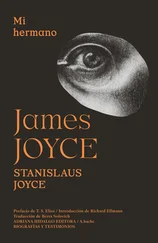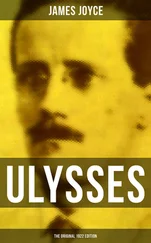JAMES JOYCE - ULYSSES
Здесь есть возможность читать онлайн «JAMES JOYCE - ULYSSES» весь текст электронной книги совершенно бесплатно (целиком полную версию без сокращений). В некоторых случаях можно слушать аудио, скачать через торрент в формате fb2 и присутствует краткое содержание. Жанр: Классическая проза, на английском языке. Описание произведения, (предисловие) а так же отзывы посетителей доступны на портале библиотеки ЛибКат.
- Название:ULYSSES
- Автор:
- Жанр:
- Год:неизвестен
- ISBN:нет данных
- Рейтинг книги:3 / 5. Голосов: 1
-
Избранное:Добавить в избранное
- Отзывы:
-
Ваша оценка:
- 60
- 1
- 2
- 3
- 4
- 5
ULYSSES: краткое содержание, описание и аннотация
Предлагаем к чтению аннотацию, описание, краткое содержание или предисловие (зависит от того, что написал сам автор книги «ULYSSES»). Если вы не нашли необходимую информацию о книге — напишите в комментариях, мы постараемся отыскать её.
ULYSSES — читать онлайн бесплатно полную книгу (весь текст) целиком
Ниже представлен текст книги, разбитый по страницам. Система сохранения места последней прочитанной страницы, позволяет с удобством читать онлайн бесплатно книгу «ULYSSES», без необходимости каждый раз заново искать на чём Вы остановились. Поставьте закладку, и сможете в любой момент перейти на страницу, на которой закончили чтение.
Интервал:
Закладка:
Only after the continuous manuscript text was assembled did copytext editing come into play, as the continuous manuscript text was then emended, like any other copytext, as a result of the editorТs comparison of it to the other prepublication documents and to the few postpublication documents in which Joyce was involved (primarily errata lists that he helped to prepare and corrections for the 1937 reprint of the 1936 Bodley Head edition). Since most of the collation was done to construct the patterns of writing and revision in the continuous manuscript text in the first place, the copytext editing was largely confined to eliminating errors of transmission and to emending accidentals. Again, it was not done primarily to fulfill final authorial intentions. 3 The copytext editing of the continuous manuscript text is indicated in the footnotes to the synoptic textЧthe presentation of the editorТs assembly of the continuous manuscript textЧin Ulysses: A Critical and Synoptic Edition.
The critical edition of Ulysses set as its arbitrary goal the creation of a parallel text to the historical first edition, one that ideally represents the first edition without errors. (Of course, nothing is ideal, and the 1984 edition inadvertently introduced a few errors of its own.) Such a goal was a pragmatic, and not a logically necessary, one; the assembled continuous manuscript text could have stood as the editionТs text. As it is, GablerТs edition offers as the parallel text to the first edition text the assembled and then copytext-edited continuous manuscript text, as displayed on the left-hand pages of Ulysses: A Critical and Synoptic Edition with its system of diacritical codes showing the editorТs assembly, and footnotes revealing his emendation, of the continuous manuscript text. A further extrapolation (again the result of a pragmatic decision on the editorТs pan), offered on the right-hand pages and in this printing, is the editionТs reading text, which comprises the synoptic text without any of its words or punctuation in full or angle brackets (those deleted or changed by Joyce), its diacritical codes, or its footnotes. Episode and line numbers in this printing correspond to those on the right-hand pages of Ulysses: A Critical and Synoptic Edition.
A passage from the СLestrygoniansТ episode (8:654-67; pp. 138-39 in this printing) provides a good, and much-discussed, example of how the continuous manuscript text was assembled (the synoptic text is in volume 1, p. 356, ll. 10-24 of Ulysses: A Critical and Synoptic Edition ).
(B)[Squatted] Perched(B) on high stools by the bar, hats shoved back, at the tableso calling for more breado no charge, swilling, wolfinggobfuls of sloppy food, their eyes bulging, wiping wetted moustaches. 1A pallid 3suetfaced3 young man polished his tumbler knife fork and spoon with his napkin. New set of microbes. A man with ano infantТs^ DsaucestainedD napkin tucked round him D[spooned] shovelledDgurgling soup down his gullet. D[1Spoonfed.]D A man spitting back on his plate: halfmasticated gristle:(C)gums:o(C) no teeth to 1[chew] chewchewchew1 it. Chump chop 1[he has.] from the grill.1 DBolting to get it over.D Sad booser's eyes. DBitten off more than he can chew. Am I like that? See ourselves as others see us. Hungry man is an angry man. Working tooth and jaw.D 1DonТt! O! ^A bone!^ That last pagan king of Ireland Cormac in the schoolpoem choked himself at Sletty southward of the Boyne. Wonder what heo was eating. ^Something galoptious.^ Saint Patrick convened him to Christianity. Couldn't swallow it all however.1 -->
The final working draft for СLestrygoniansТ is lost, so the earliest extant document is the fair copy on the Rosenbach Manuscript. The original text of this passage reads there, СSquatted on high stools by the bar, hats shoved back, at the tables calling for more bread no charge, swilling, chewing gobfuls of sloppy food, their eyes bulging, wiping wetted moustaches. A man with a napkin tucked round him spooned gurgling soup down his gullet. A man spitting back on his plate: gristle: no teeth to chew it. Chump chop he has. Sad booserТs eyes.Т Subsequent revisions and additions changed and augmented the text, with letters B, C, and D indicating, respectively, JoyceТs revisions to the lost final working draft as indicated by the typed text on the extant typescript, the first round of revisions to the typescript, and the second round of typescript revisions. (Letters in parentheses indicate reconstructed text on documents that have not survived.) The numbers indicate the revisions on each subsequent setting in proof. Full brackets show JoyceТs deletions or changes, as in the revision of the manuscriptТs СspoonedТ to СshovelledТ in the second round of typescript revisions (l.15). Carets indicate additions within a single stage, such as JoyceТs addition of СinfantТsТ between СaТ and СnapkinТ on the manuscript (ll. 14-15) or of СSomething galoptious.Т as an addition-to-an-addition on the first set of proofs (l.23). When combined with angle brackets, carets show a revision, as when Joyce revised СchewingТ to СwolfingТ on the manuscript itself (ll. 11-12). The synoptic presentation of the continuous manuscript text is thus an assemblage of inclusion: JoyceТs deleted and superseded readings, as well as those that remain in Ulysses, are all part of it.
The superscript circles in the synopsis point to the footnotes (not reproduced here), where the editor has recorded his editorial emendations to the continuous manuscript text. For example, at l. 14, he emended the manuscriptТs СaТ to СanТ preceding СinfantТs napkinТ on the basis of his conjecture of JoyceТs activity on the lost final working draft, the text on the surviving typescript providing the evidence. The edited text differs from all earlier editions of Ulysses in one place: the word Сgums,Т with the subsequent colon (l. 17 of the synopsis and l. 660 of the reading text), is restored to the text for the first time here.
The presence or absence of СgumsТ might seem like a minor matter, but it is indicative of all the decisions involved in editing Ulysses. The editor admitted the word into the continuous manuscript text, and it became part of the edited text, on the basis of its appearance in the serialized version of СLestrygoniansТ in the Little Review; he argues that its appearance there is evidence that Joyce added the word onto a lost typescript page. The wordТs appearance here is consistent with GablerТs procedures. In a review of the edition, Jerome J. McGann made the important observation that СgumsТ is correct here but that an edition that follows other principles would be equally correct without the word. This word can stand for the many that appear in GablerТs edition, often for the first time in printed versions of Ulysses, because of his editorial principles and the consistent application of the procedures that follow from those principles.
Several examples can indicate how the editor arrived at particular readings and also how other editions might read differently. First, on the opening page of this edition, Buck Mulligan calls СoutТ to Stephen (l. 6) and blesses the СlandТ (l. 10), whereas in earlier editions he called СupТ and blessed the Сcountry.Т In both cases, the editor follows the Rosenbach Manuscript (which here was the typistТs copy) and reasons from a bibliographic analysis of the transmission text that the typed СupТ and СcountryТ were unauthorized departures from JoyceТs text. In the first case, he additionally surmises that the typist was looking ahead to СCome up, Kinch!Т in the following line. Likewise, in this edition the telegram that Stephen Dedalus recalls in СProteusТ reads, СNother dying come home father.Т (3.199), whereas earlier editions show the first word as СMother,Т more correct but failing to image the curiosity of the telegramТs orthographic error. The editor follows JoyceТs inscription of СNotherТ on the Rosenbach Manuscript (again the typistТs copy), which Joyce insists on once more in his revisions to the first set of proofs, and rejects the reconstructed typed text on the lost typescript and the СcorrectionТ to СMotherТ entered in a hand other than JoyceТs on the fifth and final set of proofs. The best known passage in this edition that is not part of any previous printed edition of Ulysses is the so-called СloveТ passage in СScylla and Charybdis.Т In the middle of his discussion of Shakespeare, Stephen asks, СЧWill he not see reborn in her, with the memory of his own youth added, another image?Т and then thinks, СDo you know what you are talking about? Love, yes. Word known to all men. Amor vero aliquid alicui bonum vult untie et ea quae concupiscimus . . .Т (9.427-31). The passage is in the Rosenbach Manuscript; the final working draft used by the typist is lost. Gabler reasons that the working draft did not differ from the surviving fair copy at this point and that the typist skipped from one ellipsis at the end of an underlined passage indicating italics in the line before StephenТs question (the line ends СLТart dТкtre grandp….Т ) to a similar nearby ellipsis after another underlined passage (StephenТs Latin thought ending with СconcupiscimusТ ), thus omitting StephenТs question and subsequent thought. In each case, and in the case of СgumsТ as well, the editorТs justification for his choices was textual and bibliographical, not critical; none of these examples presented a problematic or ambiguous textual situation. It is important to note, though, that an edition prepared under other assumptions (for example, one privileging the transmitted text over the written one) might in each case choose the reading that this edition rejects.
Читать дальшеИнтервал:
Закладка:
Похожие книги на «ULYSSES»
Представляем Вашему вниманию похожие книги на «ULYSSES» списком для выбора. Мы отобрали схожую по названию и смыслу литературу в надежде предоставить читателям больше вариантов отыскать новые, интересные, ещё непрочитанные произведения.
Обсуждение, отзывы о книге «ULYSSES» и просто собственные мнения читателей. Оставьте ваши комментарии, напишите, что Вы думаете о произведении, его смысле или главных героях. Укажите что конкретно понравилось, а что нет, и почему Вы так считаете.





